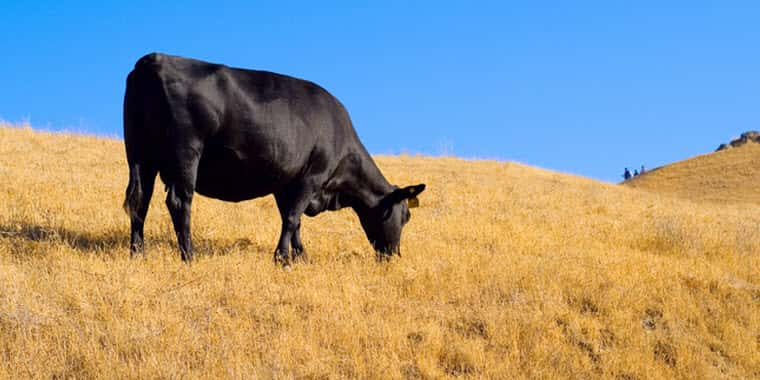BROOKINGS, S.D. – The time to process fall-weaned calves and determine pregnancy rates among cows will soon be here. Management of open cows is critical to the financial bottom line of a cow/calf operation, said Julie Walker, Associate Professor & SDSU Extension Beef Specialist.
“It is estimated that 15 to 20 percent of a cow-calf enterprise revenue comes from cull cows,” she said.
“Determining open cow(s) early allows producers to select the best strategies which target the highest potential revenue.”
Once open rates are determined, Walker explained that cattle producers are faced with a few decisions.
“They can either sell the open cows right away, feed them out or re-breed them.”
Rebreeding open cows
Another option Walker encourages producers to look at is re-breeding open cows before taking them to the sale barn.
“Bred cows typically bring more money than cull cows,” she explained. “These newly bred cows would target fall-calving cowherds – and the number of fall-calving herds appear to be increasing in South Dakota.”
If higher than normal open rates occur, Walker said producers need to work with their veterinarian to determine the potential cause.
Breeding-long season pregnancy rates are usually in the range of 94 to 98 percent. Pregnancy rate is calculated by total number pregnant during the breeding season/number of females exposed to breeding (expressed as a percent).
Walker explained that “normal” pregnancy rates are influenced by several factors including:
- Length of breeding season;
- Body condition score of cows;
- Bull-to-cow ratios; and
- Health status of bull(s) as well as other factors.
“So remember to compare pregnancy rate only within your own herd,” Walker said.
Is re-breeding the right option for my operation?
When determining if re-breeding open cows is the right option for your operation, Walker said there are a few questions to consider.
Are bulls available for a second breeding season?
Using bulls for a second breeding season is often accomplished when producers have both a spring- and fall-calving herd.
What is the cost of retaining these open cows through a second breeding season? Using the $1.30 cost per day, should include most expenses such as feed, labor, interest, and utilities.
What is the potential income from the bred cow?
“Remember not all open cows would fit this program, evaluate each cow to determine if it should remain in any producer's program,” Walker said.
Cull cows often include more than open cows such as those with one or more of the following issues:
- Poor performance;
- Bad udder;
- Temperament;
- Bad eyes;
- Age;
- Structural soundness; and
- Health concerns.
“A simple cost analysis of this system would be bred cow value minus open cow value,” Walker said. “If the difference is higher than the cost of breeding/feeding/etc., it is a profitable system.”
However, if the difference is lower, Walker said this may not be the year to utilize this management system.
She shared the following example: Retaining cows for 90 days at $1.30 per day, would require the bred cow value to be $117 higher than the open cow. If a producer retained the open cows for rebreeding for 120 days the difference would need to be $156. This calculation did not include the cost for bull use.
“Re-breeding open cows will change the value compared to open cows, however, each producer needs to determine if this change is positive,” Walker said.
Walker reminds producers that within South Dakota there is a regulation that “no non-virgin and non-pregnant female cattle may be imported, loaned, leased, nor acquired for breeding purposes in South Dakota.” To learn more about this regulation, visit the S.D. Animal Industry Board website.
Source: iGrow SDSU Extension




